US Troops Prepare to Fight in a Way That Looks More Like World War II
Nolan Peterson /
RAMSTEIN AIR BASE, Germany—Exactly 75 years and one week after the first American patrol crossed into Nazi Germany during World War II, hundreds of U.S. Army paratroopers descend onto German territory.
Rather than the liberation of Europe, however, these U.S. troops arrive for a simulated battle as part of an exercise called Saber Junction. The training event is designed to hone the skills that American troops need to defend allies, such as Germany, from the aggression of so-called near-peer adversaries such as Russia or China.
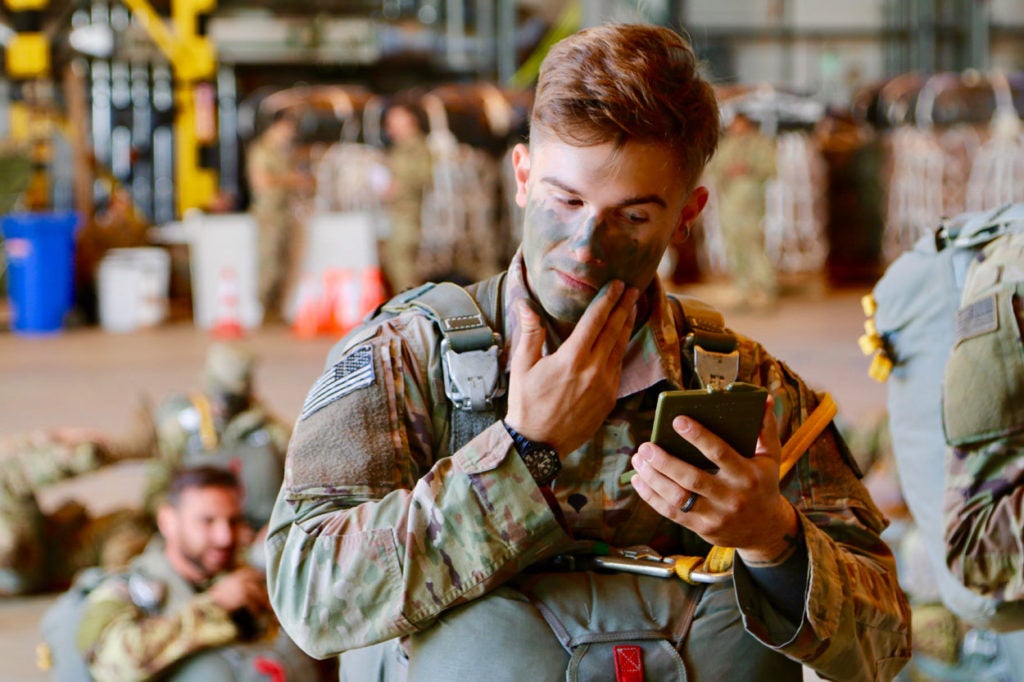
“We happen to be doing this in Europe. But we could apply this fight to anywhere on Earth,” says Lt. Col. Cade Keenan of the Missouri Air National Guard.
After a generational focus on counterinsurgency warfare in the Middle East and Afghanistan, U.S. armed forces are spinning up for a new era of conventional threats from other nations.
Nowadays, American troops are preparing to fight a war that looks a lot more like World War II than the ones in Iraq, Syria, and Afghanistan—or Vietnam, too, for that matter.
The scenario for the three-week Saber Junction exercise: An unnamed enemy force has invaded from the east with two army-sized units and a smaller force, stranding U.S. State Department noncombatants in a town. The U.S. troops’ mission is to evacuate the civilians and liberate the town from “enemy aggression.”
“Saber Junction is a large-force exercise to practice interoperability with our international partners and to prove that we can repel a near-peer adversary invading Europe,” says Keenan, whose 139th Airlift Wing is the lead C-130 unit participating in the exercise.
“We fought an asymmetric conflict for 18 years [in Afghanistan]. And times are changing,” says Lt. Col. Barrett Golden, a C-130 pilot and air mission commander for Saber Junction.
“Strategically, we are repositioning ourselves for that near-peer conflict, as we should, especially with some of the threats that are out there in the world,” Golden says.
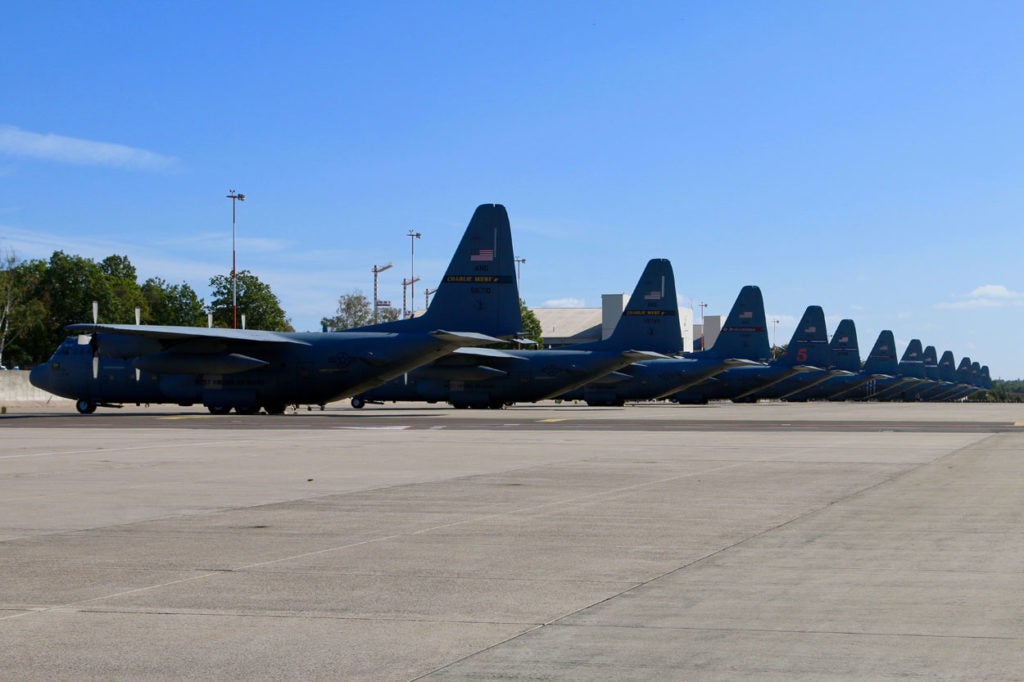
Although Russia isn’t outright named as the adversary, Saber Junction clearly is designed to simulate what a war with Russia would look like.
The exercise also was clearly meant to transmit a crystal-clear message to Moscow that the U.S. is willing and able to defend its European allies by military force, U.S. personnel tell The Daily Signal.
“I hope Russia is watching us,” says Capt. Robert Walling, 32, a C-130 pilot. “They’re our biggest near-peer adversary in this part of the world, so I would assume they’re going to have eyes and ears out. I mean, it’s not like this is some big secret Scooby-Doo mission, where no one knows what’s going on.”
Stress Test
The U.S.-led battle plan for Saber Junction called for a formation of C-17s and C-130s to airdrop loads of machinery (including Humvees) and weapons on the target area. Then come the paratroopers—almost 600 of them, including Italians and Turks—who jump into the simulated battle Sept. 18 from more C-17s and C-130s. Separate forces arrive by helicopters and ground convoys.
The Army contingent of paratroopers come from the 173rd Airborne Brigade, based in Vicenza, Italy. The C-130s are from the Air National Guard.
“This is like the playoffs for us. It’s a chance to get real-world experience, without anyone actually shooting at you,” says Air Force Staff Sgt. Joshua Rockhold, a C-130 aircrew member from the Missouri Air National Guard, speaking with The Daily Signal prior to the exercise.
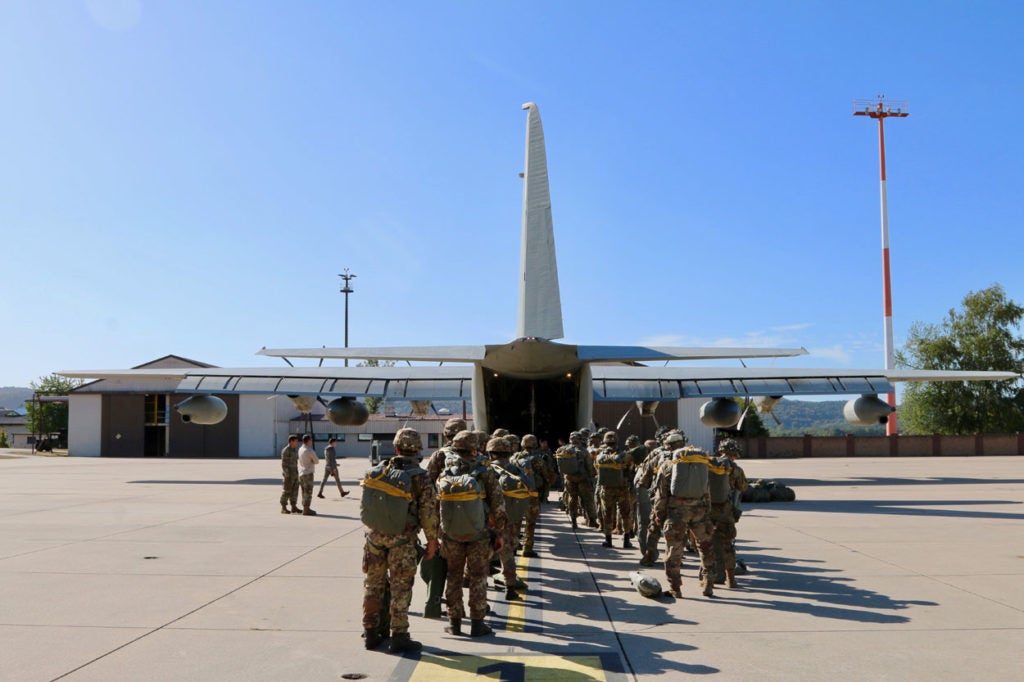
Following the airdrop, Saber Junction continues on for about three more weeks, comprising a gamut of other simulated combat scenarios. Altogether, the exercise involves about 5,400 troops from 15 U.S. allies and partner nations, including Ukraine.
Troops and commanders describe Saber Junction as a valuable chance to test the U.S. Army and Air Force’s conventional war-fighting skills. The exercise has a real-world objective, too, as do all U.S. military exercises in Europe these days—to send a message that America is willing and able to defend its allies.
“We’re here to show our European adversaries that we can repel aggression, and they shouldn’t make any attempts to invade another sovereign state. So we are here,” Keenan says.
The Next Generation
Hours before the opening airborne operation for Saber Junction, hundreds of paratroopers wait in an aircraft hangar at Ramstein Air Base. They wear their parachutes and have their faces painted in camouflage.
The younger soldiers are quiet, focused. Some are fresh recruits who just recently joined their new units. This is their first major exercise. A veritable baptism by fire.
The older soldiers (in their mid- to late-20s) appear much more relaxed. They smile and joke, acting like they’ve done this a million times before.
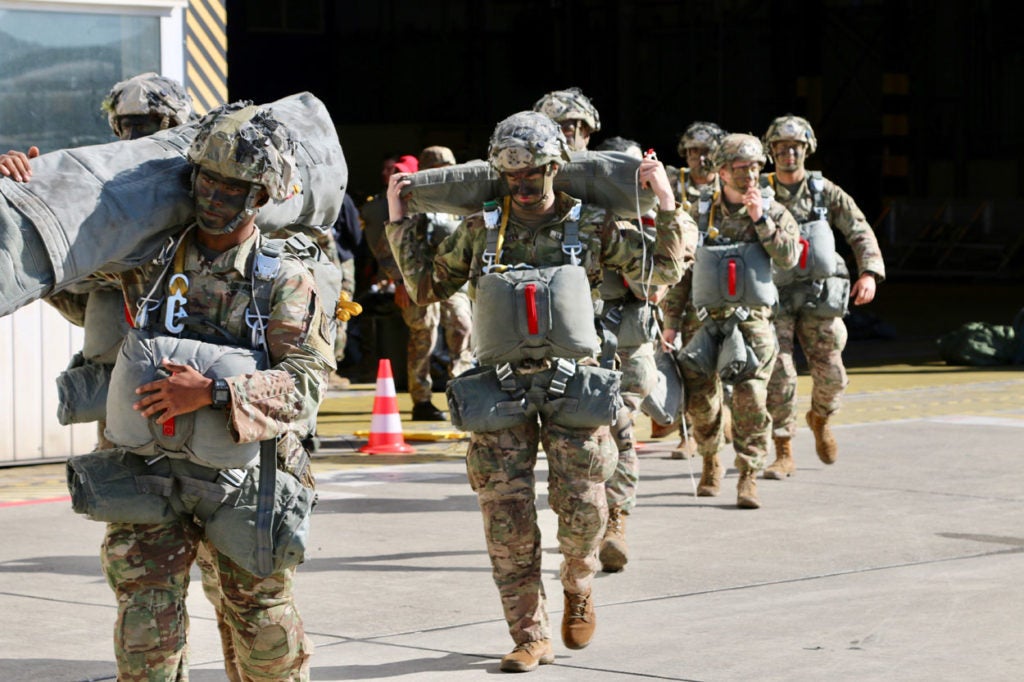
“If you’ve deployed, and you’ve seen unfortunate things, you know that war isn’t a game. But if you haven’t seen combat, it’s hard to understand the consequences of war,” says Army Staff Sgt. Michael Stutchman, a 29-year-old veteran of multiple combat deployments.
“It’s up to us, the [noncommissioned officers], to mentor the younger generation,” Stutchman adds.
A common refrain among the Air Force personnel is how young the force is becoming. However, according to Department of Defense data, that’s not really true. The average age in the Air Force’s ranks has remained fairly constant over the past decade.
Currently, the average age of the Air Force’s officer corps is 35, while the average age of its enlisted force is 28. Overall, 39% of Air Force personnel are below age 26.
The average age of all U.S. military forces was 28.3 in 2017, down slightly from 28.5 in 2010. In 2017, 45% of the military was 25 or younger, compared with 44.2% in 2010.
Yet, the relatively stable age demographics of the U.S. armed forces underscore another, qualitative trend. As the normal turnover of American military personnel continues, the older troops and airmen with multiple combat deployments under their belts are slowly phasing out and being replaced by new personnel who’ve never been to war.
Today, some of the newest recruits weren’t even born on Sept. 11, 2001.
“As of now we still have a pretty battle-hardened military, but that combat experience is slowly fading away,” says Army Sgt. Jacob Bokelman, who deployed to Iraq in 2016.
Combat experience was once taken for granted as a fact of life in the decade or so after 9/11. Overseas deployments became part of life’s rhythm, a recurring experience as perennial as the holidays.
Of course, U.S. military forces are still in Afghanistan and engaged in counterterrorism operations across the world. But it’s not like it used to be.
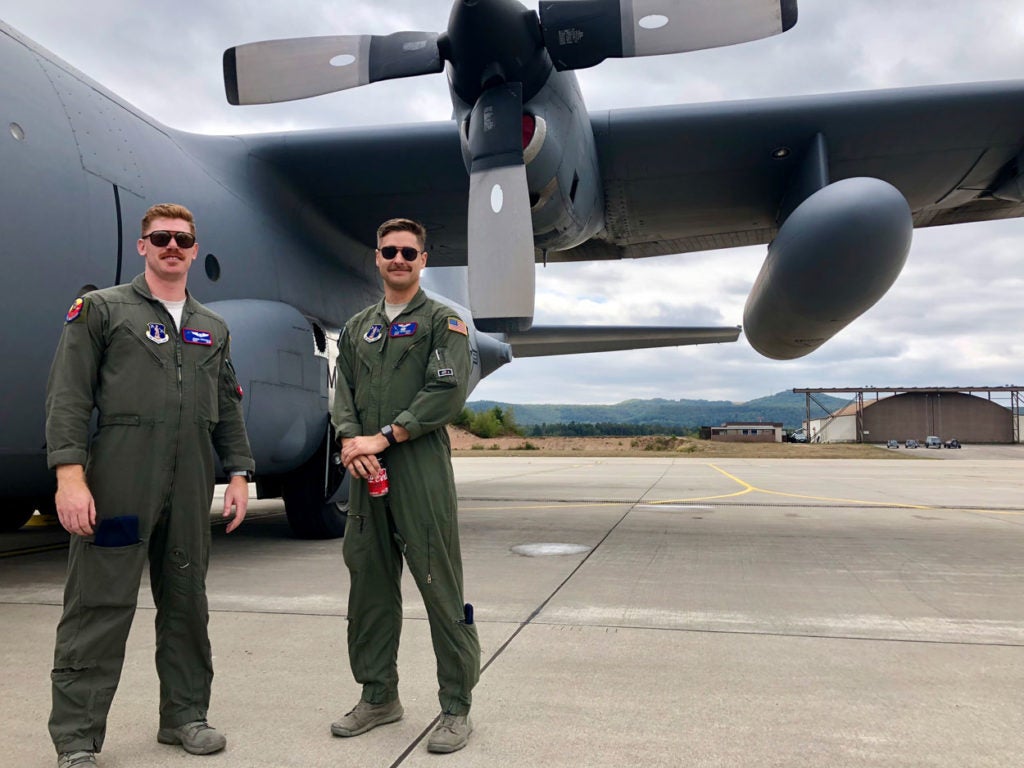
“We had other priorities that needed to be addressed [after Sept. 11, 2001],” Keenan says. “And now that the fight is shifting to near-peer adversaries, we need to readjust those priorities. I don’t think that complacency is the right word. I think we just were focusing on the things that we needed to do. And now we need to refocus.”
As the post-911 combat generation moves on to other endeavors beyond the military, a generation’s worth of combat experience is moving on, too. Now, deployment experience is a distinguishing credential among the troops, when it was once the norm.
Keenan says:
As far as my experience in Afghanistan particularly, I think that gives me some credibility with the younger aircrew who have not seen combat yet. Having spent 800 hours flying in combat over nine deployments, I feel like I’ve got the credibility to tell younger crews this is what we need to learn, because this is what we did in Afghanistan, and this is what we can do anywhere on Earth in the future.
Yet, even among the combat veterans, very few active-duty U.S. military personnel today have had experience in the type of combat simulated by Saber Junction. That’s to say, a conventional fight against an adversary such as Russia.
A war fought by tanks, artillery, and rockets, and in which the vaunted U.S. Air Force may not enjoy air superiority at the outset. That’s not a familiar combat environment for U.S. soldiers, sailors, and airmen.
“We haven’t gone up against an adversary with an air force for a long time. So this is, in a sense, a much more lethal type of combat environment that we’re preparing for,” says Walling, the Air Force captain.
‘A Whole New Ballgame’
Combat, no matter who the enemy is, is always chaotic and stressful. Yet, a generation of counterinsurgency operations has adapted the U.S. military to operating within a rather predictable combat environment against a technologically inferior enemy.
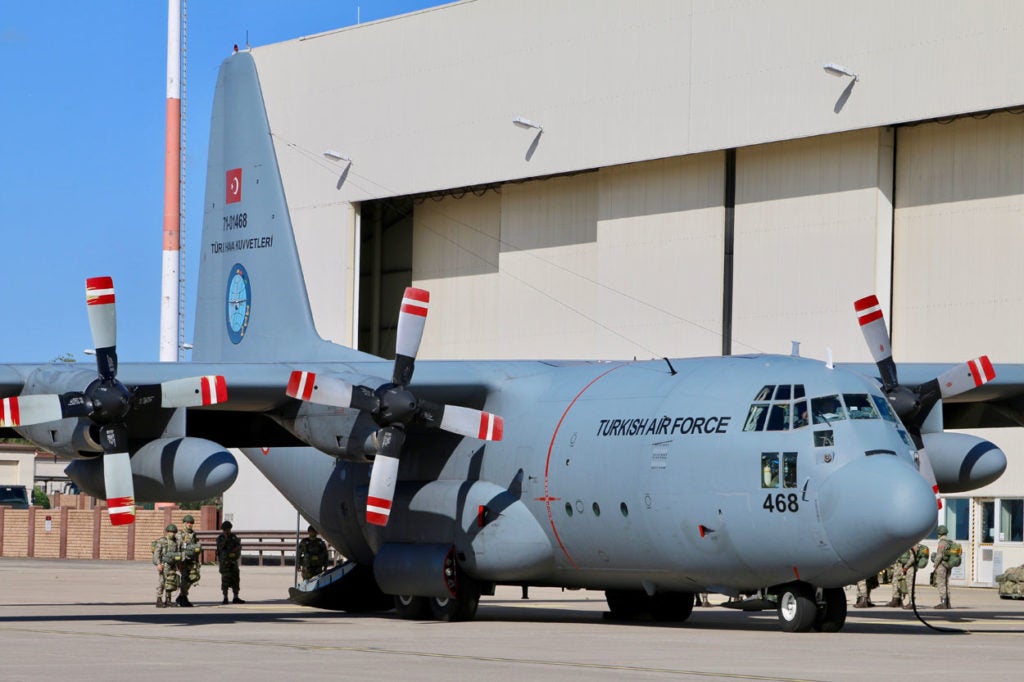
Today, the U.S. military is used to fighting below its weight class in combat theaters where the consequences for indecision, both strategic and tactical, never truly risk defeat. No one seriously thinks the Taliban, the Islamic State, or al-Qaeda has the means to drive American forces off the battlefield.
There never will be an American Dunkirk in Afghanistan or Iraq. Could there be, however, in Estonia?
Against an adversary such as China or Russia, U.S. forces will face a much more confusing, lethal battlefield where nothing can be taken for granted.
“War against a near-peer adversary is a whole new ballgame,” says Stutchman, a veteran of multiple combat deployments.
Thus, the American warrior, whether on the ground or in the air, must be confidently empowered in the next war to inflict violence and execute decisions without directly and continuously communicating with commanders safely positioned outside the battle space.
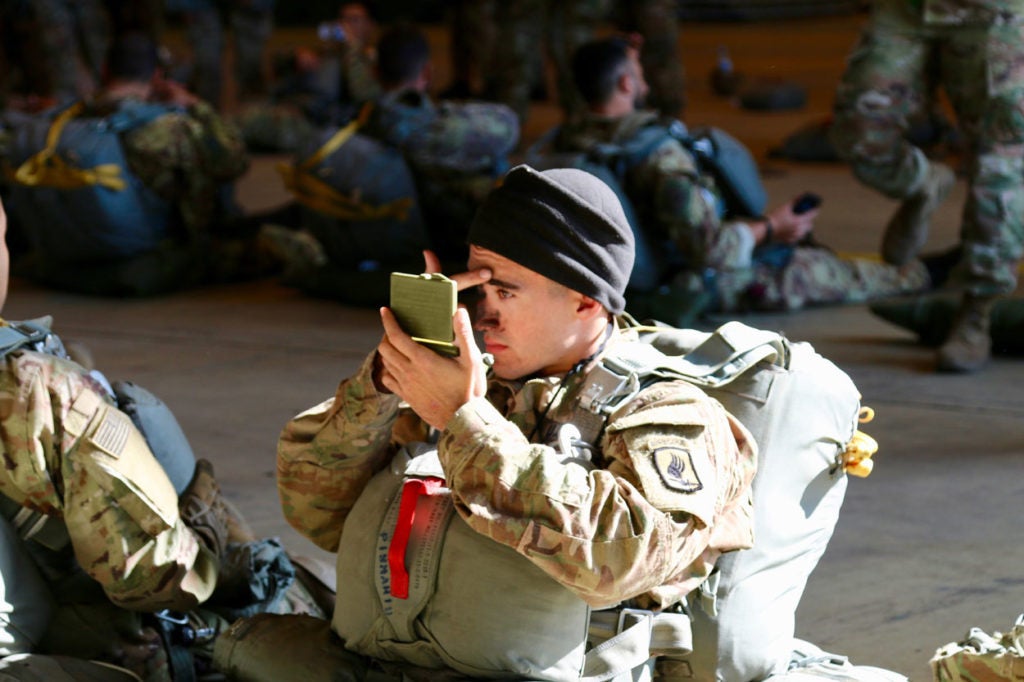
“This is training to face another country’s regular military,” Bokelman says as he waits for Saber Junction to begin. He wears his parachute, his face painted in camouflage.
“That kind of enemy would have far better training and technology than the enemies we faced in Iraq and Afghanistan,” he says. “It’s a more aggressive fight than counterinsurgency. Counterinsurgency can be murky. But in a full-on war against a conventional force, we have to be extremely aggressive.”
Former Defense Secretary Jim Mattis explicitly laid out the terms of this historical shift in U.S. military priorities in his summary of the 2018 U.S. National Defense Strategy.
Mattis wrote:
Today, we are emerging from a period of strategic atrophy, aware that our competitive military advantage has been eroding. We are facing increased global disorder, characterized by decline in the long-standing rules-based international order—creating a security environment more complex and volatile than any we have experienced in recent memory. Interstate strategic competition, not terrorism, is now the primary concern in U.S. national security.
Stress Test
New threats, like those posed by Russia and China, demand that U.S. forces maintain an exhaustive training schedule to be proficient in myriad types of operations.
And the counterinsurgency threat is still there, too, requiring a constant rotation of forces to support ongoing combat operations in the Middle East, Afghanistan, and Africa.
Tech Sgt. Tyler Ingino, 34, is a C-130 loadmaster. He enlisted after the 9/11 terrorist attacks and has deployed 11 times in his career. Despite the tapered-down U.S. war efforts in Iraq and Afghanistan, he says the pace of his career hasn’t relented.
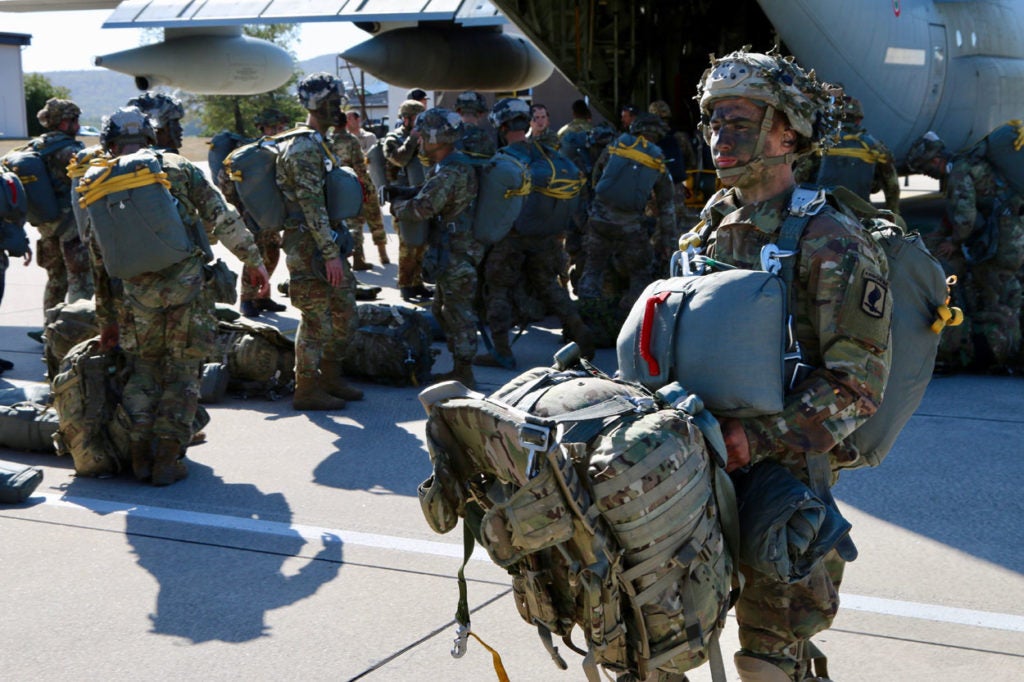
“It feels like we’re not slowing down at all,” Ingino says, wiping sweat from his brow as he takes a short break from prepping a C-130 for an airdrop that evening.
All those years of constant combat operations took a toll on troops and their families. It also wore down hardware, including the venerable C-130s—a four-propeller transport aircraft that has been a workhorse for U.S. conventional and special operations forces since the 1950s.
“Our C-130 fleet has really gone downhill,” Ingino says. “All the stress of repeated combat deployments has caught up to the airframes.”
Indeed, looking inside a modern C-130 cockpit is like examining the rings of a tree to determine its age. Throughout the cockpit is scattershot evidence of technological evolution over the decades. Old-school round dial gauges nestle among modern computer screens. Control yokes are missing paint; the metal frame around the windows shows marks of repair.
As a case in point—on the first set of sorties for Saber Junction, a Missouri Air National Guard C-130 has to shut down an engine due to a mechanical emergency.
“Aircraft modernization. That’s a concern. Obviously it’s no secret out there we have aging model fleets on this ramp,” Golden says. “We’ve got to continue to be resourced appropriately for this next fight and hopefully we can … identify issues here and scream to those strategic level leaders to please resource accordingly: ‘Please let us develop new tactics. Please let us get new widgets. And let’s get the things that we need to win in the next fight.’”
According to The Heritage Foundation’s 2020 Index of U.S. Military Strength, the average age of all Air Force aircraft now exceeds 29 years.
“Adversaries are modernizing and innovating faster than the Air Force is, jeopardizing America’s technological advantage in air and space,” the report stated last year, adding this year: “The decades-long trend of steadily declining aircraft numbers, coupled with the fleet’s ever-growing average age, may be lulling senior leaders into the belief that the service can be fixed sometime in the future, but the numbers tell a different story.”
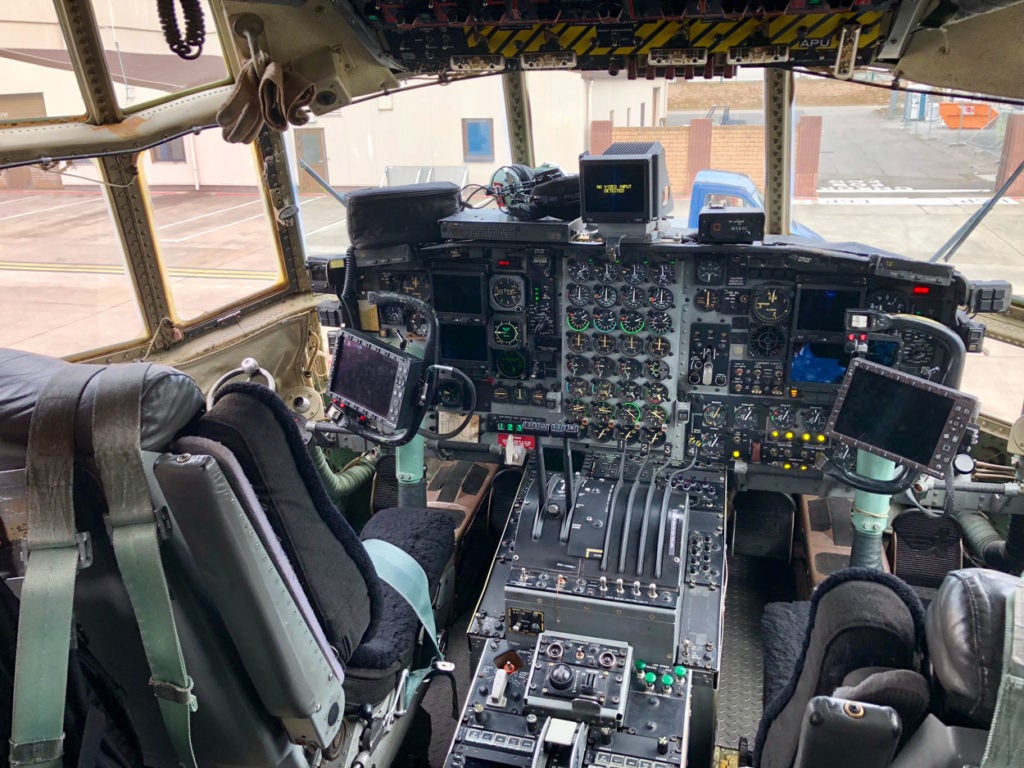
Budget cuts have hurt readiness, too. One phrase often heard these days in U.S. military circles is that America’s armed forces have to become more “joint.” In civilian parlance, that means the U.S. can’t go it alone and will have to rely more on NATO allies and other partners.
For that reason, Saber Junction was seen by U.S. aircrews and soldiers as an invaluable chance to practice operating alongside foreign partners.
Keenan, the C-130 pilot, says:
There is no substitute for doing. We have to meet these international crews and brief them and let them they share their capabilities with us so we can adjust to have an effective combined fight. We can’t do that over email and teleconferences. They have to be here. We have to fly with them to build those lessons learned, so that we can provide that to the next operation in a joint combined environment.
Warm-Up Front
Throughout history, U.S. military-industrial dominance has permitted the luxury of “warmup” periods in its wars to arrive at a coherent strategic vision and develop workable tactics to achieve victory.
Famously, U.S. military forces had a chance to hone their combat acumen on the North African front in World War II before embarking on the liberation of Europe.
In his Pulitzer Prize-winning account of the Allied North African campaign, “An Army at Dawn,” Rick Atkinson wrote: “Like the first battles in virtually every American war, this campaign revealed a nation and an army unready to fight and unsure of their martial skills, yet willful and inventive enough to prevail.”
Likewise, in Korea, U.S. forces rebounded after Busan. In Vietnam, they flirted with myriad strategies and tactics over more than a decade of aimless warfare. And in the post-9/11 era, the military honed its counterinsurgency chops over the span of years of combat.
Against Russia, China, or another near-peer adversary, however, there will be no warmup period for Americans to hone their tactics and build confidence. The next war will be over before the U.S. has a chance to completely learn how to fight it.
“The game is changing for sure, but we have to stay at the same level of lethality,” says Army Sgt. Ethan Green, 23, as he stands in his parachute harness, his face painted in camouflage, ready to load into the back of a C-130.
“We always have to be ready,” Green says. “There’s always the possibility of going up against a uniformed army.”
‘Old School’
The recent Boeing 737 Max crashes highlighted, among other pitfalls in aviation safety, the fact that many modern commercial pilots are overly reliant on technology. And when that technology fails, those pilots may not have the fundamental airmanship skills necessary to deal with a high-stress emergency.
Air Force pilots, too, are facing a similar challenge as they try to wean new pilots off the technological staples of modern aviation—such as GPS-assisted navigation—that may be among the first things a country such as Russia would target during a conflict.
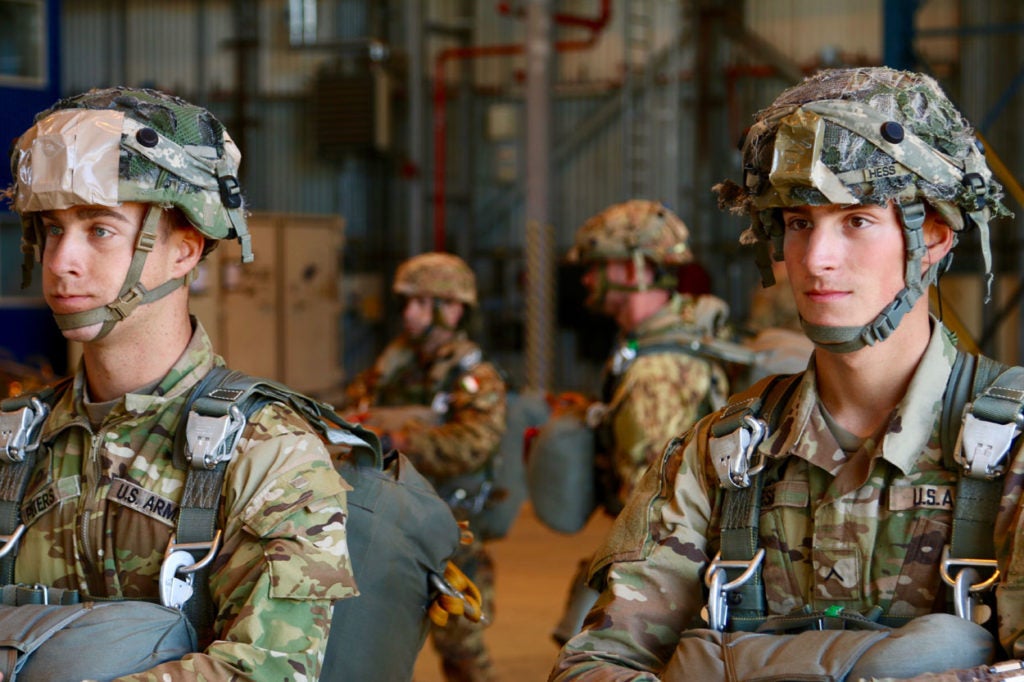
“It’s a different generation that we’re training now,” says Air Force Maj. Alan Kerkaert, 40, a C-130 pilot with multiple combat deployments.
“Seeing the young guys just coming back out of the schoolhouse, it’s going to take a while to get them ready for that type of environment,” Kerkaert continues, describing a conflict with a near-peer adversary. “And so let’s say losing satellites or something like that, unless we focus on the basics of, you know, how we navigate, how we get from A to B to accomplish the mission, without all the technology that we have now—it’s kind of an art that’s lost unless we practice it.”
At face value, this kind of back-to-the-basics training approach is nothing new for American military pilots.
Knowing what to do in an emergency when aircraft systems fail has been a key part of U.S. military flight training since its inception. Pilots are required to memorize a list of “bold face” emergency procedures detailing how to respond to emergencies that require instantaneous reactions without the luxury of time to rifle through a checklist.
However, in this era of great power competition, degraded systems training has taken on a new significance—especially as a new generation of technologically-adjusted pilots and soldiers take over from the one that fought the post-9/11 counterinsurgency wars.
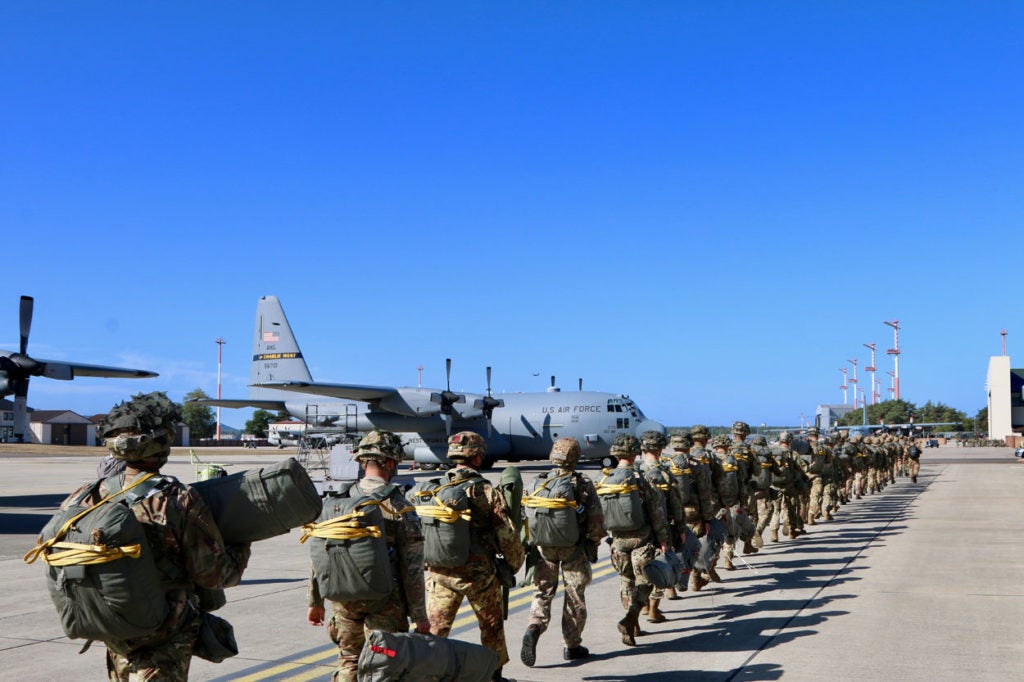
“We’re really prioritizing contested degraded operations,” Golden says, using a military term to describe a combat environment in which an adversarial force is able to impede essential technologies, such as GPS or radio communication.
Golden adds:
So we talk about brute force conflict and some people think that is … about just tanks and mortars. But there’s an asymmetric piece to that, right? And it’s a very concerning situation because a lot of our aircraft out there are very reliant upon GPS. So it is certainly an emphasis item of going back to old school, clock to map to ground [navigation techniques], and being prepared to execute the mission, basically old school.
In the combat environment of the future, high-tech adversaries may zero out the others’ weapons systems. Russian electronic warfare systems, for example, could spoof GPS signals, sending U.S. pilots inaccurate navigation information. A Russian cyberattack could, in theory, implant a virus into an aircraft’s computers, disabling key systems.
In the end, the side that is best able to execute basic skills, and fight with the simplest technology, could hold the decisive edge on a modern battlefield.
“We have ways to counter the enemy’s evil intentions,” says Walling, the C-130 pilot. “There’s no better trained air force in the world than the U.S. Air Force, and we’re able to go out there with the systems on the airplane and beat a lot of those scary things that can come and hit us in the sky—more often than not.”
